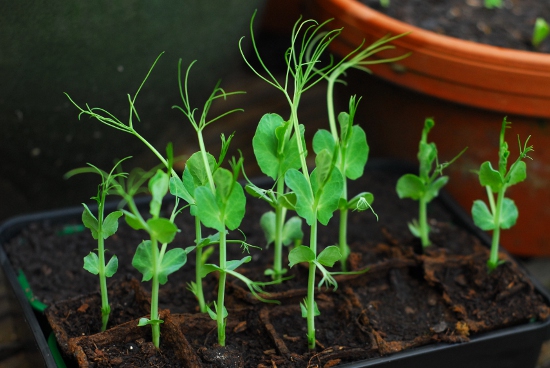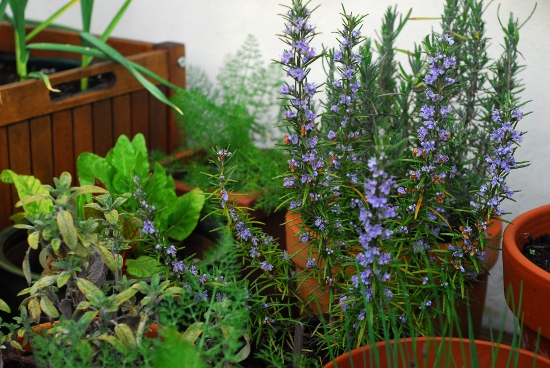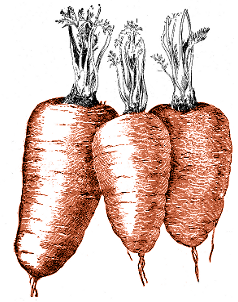Posts tagged ‘fennel’
Posted in Decorative, Experimentation, Garden Diary, Practicalities, The Old Garden In Bristol on Sunday, April 17th 2016 (9.18 PM).
This afternoon, I finished weeding the rosebay willowherb, until more shoots spring up at least. Weeded every shoot I could see, dug up every rhizome I could find, levelled out the soil and spread a layer of compost across the top.
The sowing plan for the bed starts with: peas at the back, against the trellis. Now, I’ve had issues with pea support in the past, and I suspected that the laths of the trellis are a bit big for a pea plant to wrap a tendril around, so the trellis has been covered in green plastic pea netting. It’s not the prettiest solution but it’s not too obtrusive; and I’m sure the vines of the back neighbour’s honeysuckle will love clinging onto it too.
In the front of the bed, we have scattered various seeds, mostly flowers, in the hope that the will grow up in front of the pea plants without eclipsing them entirely. We’ve scattered handfuls of:
- Cornflower, Centaurea cyanoides “Blue Diadem”
- Night scented stocks, Matthiola bicornis
- Corn marigold, Chrysanthemum segetum
- Poppy, Papaver rhoeas “Flanders”
- Swiss chard, Beta vulgaris vulgaris Cicla-Group “Five Colour Silverbeet”, because Gretchen has spotted it elsewhere and liked the different colours of the leaves.
- Tree spinach, Chenopodium giganticum “Magenta Spreen”, scattered from a packet I bought a couple of years ago and intended to sow but never did. The aim of the tree spinach is much as it was when I bought the packet: it has been sowed in the left-hand end of the bed, a dark and fairly damp corner where not much grows apart from dandelions. Tree spinach might prefer sun, but will hopefully cope with the shade there; and there won’t be any peas at that end that it might crowd out.
There are also nasturtiums, Tropaeolum majus “Empress of India”, apparently “a classic Victorian variety” according to the Internet, sowed in a couple of spots, their seeds like tiny miniature brains. The key to all of this, of course, is the idea that the peas are going to clamber up high enough and quick enough that none of the stuff around them will cause any problems. The other key, which you might have realised, is that nearly all of the ornamental (or semi-ornamental) stuff is self-seeding. Hopefully, once everything is set up, everything will keep on going year after year, or at least until we move house.
This is all very experimental and no doubt a Proper Gardener would tell us we were trying to cram far too many plants into a tiny space. However, we will wait and see. I won’t be surprised if not everything develops, or at least, doesn’t grow exactly how I originally envisaged things. It might need a bit of tweaking next year, or it might all come up again, irregular but satisfactory.
I’ve given up on the calendula seeds mentioned previously, and bought a new packet. Into pots, we sowed:
- More calendula, obviously.
- And more Tropaeolum majus.
- Mixed rocket leaves
- A different dwarf sunflower, Helianthus annuus “Choco Sun”, allegedly one of the smallest sunflower varieties available. Short enough for a toddler to sniff, I hope.
And with a general tidy-up, the garden is looking reasonable again. The back bed may be bare soil now, but hopefully within a month or two it will be full of greenery, and mostly the greenery we intended, too. In the tidy-up a lot of the wooden containers were thrown away, their wood rotted too far to save them, but that leaves us a good terracotta core. The plants we bought and potted up 2½ weeks ago are settling in nicely: the fennel looking lively, the thymes putting on new growth, and the marjoram already starting to fill up its pot. I’m rather pleased with how quickly things have been turned around. Even if things aren’t perfect yet, there’s not too much more tidying up left to do.
calendula, chard, corn marigold, cornflower, creeping thyme, fennel, french marjoram, green fennel, lemon thyme, marigold, marjoram, nasturtium, pea, poppy, rosebay willowherb, sowing, sowing plan, sunflower, swiss chard, thyme, tree spinach, weeding, Tropaeolum
Posted in Children, Experimentation, Garden Diary, Planning, Practicalities, The Old Garden In Bristol on Tuesday, March 29th 2016 (9.56 PM).
Spring has come around, and the brambles are slowly being hacked back. At least once a week, if the weather has been dry enough, I have been going outside, gloves on, and cutting my way into them. There aren’t many garden jobs I will wear gloves for, but demolishing brambles is one of them.
This has to be the year I get on top of the garden and get interested in it again, because the children—now aged two and a quarter—have started to take an interest in it themselves, partly because of me going out to hack the brambles down. “Me help garden!” says The Child Who Likes Fairies each time I look as if I’m about to go out there. Her “help” consists mostly of moving mud from place to place, of course; we gave her an old spoon in the hope she wouldn’t use her hands, but of course she does use her hands.
Given that the garden has been abandoned for two and a half years, more or less, not much is salvageable. One thing I have learned about keeping a largely container-based garden is that it does indeed require a lot of maintenance, because you don’t really end up creating a self-seeding ecosystem other than one based around dandelions. The bay bush that stands in an IKEA dustbin is doing just fine; the last potato crop in the other IKEA dustbin seems to have turned perennial, the foliage looking steadily less healthy each year. There is a pot of lavender which looks lively; a pot of rosemary which looks OK; and another rosemary and a purple sage which look as if they might survive, if we apply the defibrillator. Apart from that, there are a lot of pots filled with weeds or bare compost, and a goodly number of wooden containers in varied states of decay.
So, what to do? Back to basics, that’s what. Back to what we did five years ago when we decided we wanted to do something with our garden: go down to the garden centre, buy some plants, and see what we can make with them. The very first pots we bought are still in great condition, probably because they’re not just plain terracotta, so into them the plants go. Let’s see what happens.
There are a couple of tenets we’re trying to stick to this time. Firstly, we have children now, so it’s their garden too. The garden has to be safe for them to play in, have room for them to play in, and they need to be able to get involved in it. Secondly, we have much less time than we used to, so it has to be simple to maintain. We might only have a tiny garden, but we no longer have time to care for it on a square-millimetre basis. The other tenets are the same as always: organic principles as far as possible, things to be ideally productive, in some broad sense, as well as attractive, and the deliberate avoidance of neat rows and unnaturally bare soil. So the plants that have gone into pots today are:
- Lemon thyme, Thymus x citriodorus.
- Purple sage, Salvia officinalis purpurascens. Yes, even though we have one already just hanging on, and we’ve never had much success with sage previously. I am blaming our previous failures on small pots and over-watering.
- Green fennel, Foeniculum vulgare.
- French marjoram, Origanum onites.
- Creeping thyme, Thymus praecox “coccineus”. No, you can’t eat this one.
As The Child Who Likes Fairies has already shown herself highly skilled at moving soil from one place (usually pots) to another (usually the decking), we let her and her brother help repot them all. She quickly picked up the idea of moving compost from bag to pot. The Child Who Likes Animals, on the other hand, preferred to run around the garden as fast as he could, but he definitely seemed to be enjoying it too. Even when the rain started, they didn’t want to stop. “Me like rain,” TCWLF said. Next time, we might even let them plant some seeds.
back from the dead, creeping thyme, fennel, french marjoram, green fennel, herbs, lemon thyme, marjoram, purple sage, sage, summary, thyme
Posted in Garden Diary, Photobloggery, The Old Garden In Bristol on Saturday, December 1st 2012 (8.36 PM).
This week, it really feels as if the garden is properly getting itself going. More and more insects are out and about, and more things are starting to come alive. The lettuce and calendulas sown three weeks ago have just made their first appearance above ground, and the pea seedlings which have been growing on the kitchen windowsill are getting larger and larger, stretching their tendrils like the most grotesque of scarecrows. Today I started hardening them off ready for planting out; I probably should have done it earlier.

More peas will start germinating soon. The first batch of this year’s potato crop went into the ground today too – well, into their container. This year we picked Red Duke Of York, as something we are unlikely to see in the greengrocers, and I’ve tried to squeeze four tubers into the container rather than last year’s three. The second batch will be planted in about a month’s time.
To get the potatoes, we popped over to the Riverside in Southville. Naturally, we were rather tempted by their selection of herb plants. Possibly too tempted: intending go there purely to get potatoes, we also came home with a black peppermint, some sweet peas, and two fennel plants. The fennel is instead of the dill we grew last year; I will explain more about that later.
black peppermint, calendula, fennel, lettuce, marigold, mint, pea, peppermint, potato, spring, sweet pea
Posted in Decorative, Photobloggery, The Old Garden In Bristol on Sunday, April 22nd 2012 (11.52 AM).
A month ago, I posted a photo of a rather lonely solitary rosemary flower, as our small bush was just starting to come into flower. Ever since, as blossom erupted up and down each branch of the rosemary plant, I’ve been trying to make a better photo of it. None of the photos I’ve taken, though, has really managed to properly capture the beautiful deep violet-blue of its petals. In all of them, even those taken in the brightest sunlight, the colour seems rather pale and washed-out compared to what I can see myself outside in the garden. The local honeybees are loving the rosemary, too. Last year it was rare to see a honeybee at Symbolic Towers; I assumed there weren’t any hives nearby. There still aren’t many to be seen, but they are now regular visitors – whereas so far this year bumblebees have been a relatively rare sight.
Still, I have pushed on and tried to get the rosemary petals on-screen, before the flowers all turn to seed. Here’s my best attempt:

Not my best photo, but it gives at least an impression of the deep, strong colour I can see with my eyes. In the foreground, you can see the flower stalks some of the chives are sending up; and in the background the feathery foliage of one of the fennel plants.
blossom, chives, fennel, flowering, photography, rosemary
Posted in Experimentation, Garden Diary, Retrospective, The Old Garden In Bristol on Saturday, March 17th 2012 (3.59 PM).
A bit nippy out in the garden today: most certainly not as springlike as other days, with dark clouds massing overhead. Not at all like the warm, insect-filled garden of last weekend. Still, I did the things I meant to do: replanted the pea seedlings in their final location, sowed more peas to germinate on the windowsill, scattered a few “surprise” annual flower seeds in spare corners, and retreated to the sofa before the rain broke.
The pea seedlings have, like last year, gone in a box to stand on the garden wall. I should have transplanted them earlier: they were getting rather stuck in their tiny modules. The next batch of peas will start their hardening-up rather earlier, so they can be transplanted outside rather earlier too. The fennel I repotted last week is looking nicely at home, plenty of feathery new growth coming from the heart of both plants. The sweet peas are not so happy, still looking rather listless and floppy, so I have given them a bit more scaffolding to climb up: horizontal strings wrapped around their cane pyramid.
I said last time that I would explain a bit more about the fennel, and why we decided to get some. It is, essentially, to make up for last year. We tried to grow dill last year, and it was a bit of a failure.
If you look at a packet of dill seeds, you see a rather idealised picture: a big pot with a big dill plant inside it, leaves pouring down like a waterfall. Of course, if you’re growing dill for food, that’s what you need, because you need a good bunch of the individual fronds to put in your gravadlax. However, trying to grow dill from seed, that wasn’t what we got at all. The first plants we sowed in modules and tried to pot on: that failed entirely. The second plants we sowed in their final location; they put out a few leaves, then immediately bolted to a few feet high and flowered. Hardly any leaves at all, not even enough to make a single meal out of. The flower heads are pretty: finely-divided cadmium-yellow umbels; but, to be honest, I like eating dill too much to be satisfied with that. Why did it happen? I suspect the pot we put them in was rather too shallow, and the plants’ roots felt rather too cramped for comfort.
Now, in all the books I’ve read, it says: “don’t grow dill and fennel together”. They might give a reason, too, but if they have I haven’t absorbed it, come away only with the idea that they don’t work well together for some reason. I picture the real explanation being like primary school parents’ evening: “honestly, we love little Fennel, and he’s fine on his own, but when him and Dill get together they do tend to egg each other on. Mrs Anderson still can’t bear the sight of pencil shavings, and it was four months ago now…” Anyway, whatever the reason is, as we were trying to grow dill last year, we thought that fennel must be avoided at all costs. As I’m now completely exasperated with trying to get dill to grow, this year it is the fennel’s turn. We don’t have room for more than a couple of bulbs, so we won’t get more than a single side dish from it at the end of the season – fennel gratin is delicious, by the way. I’m more interested to see if its leaves can be used like dill, or if they will end up as purely structural plants for the summer – hopefully they will give the garden a more delicate sense of height than things-up-canes can provide.
dill, fennel, pea, sweet pea



